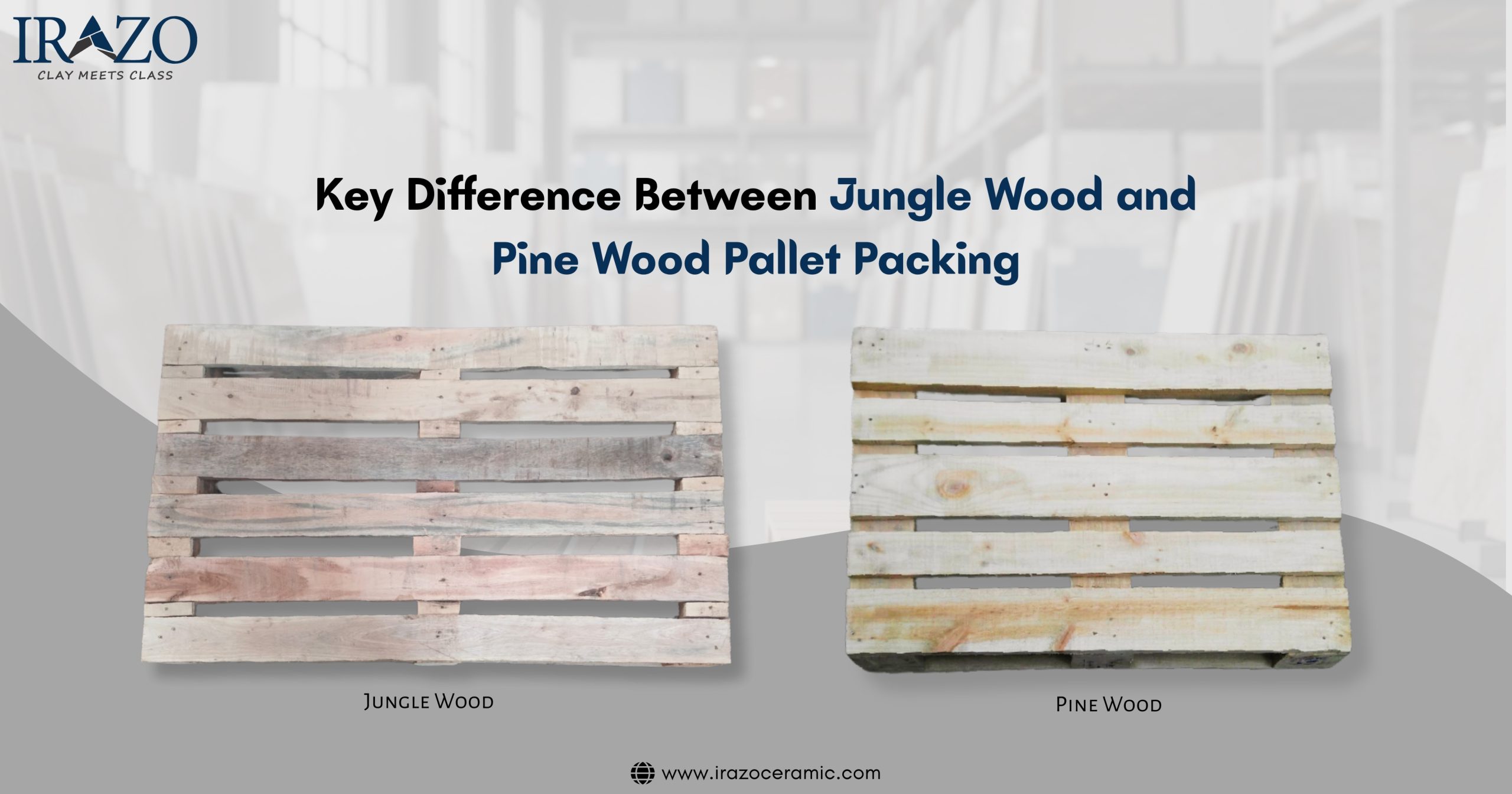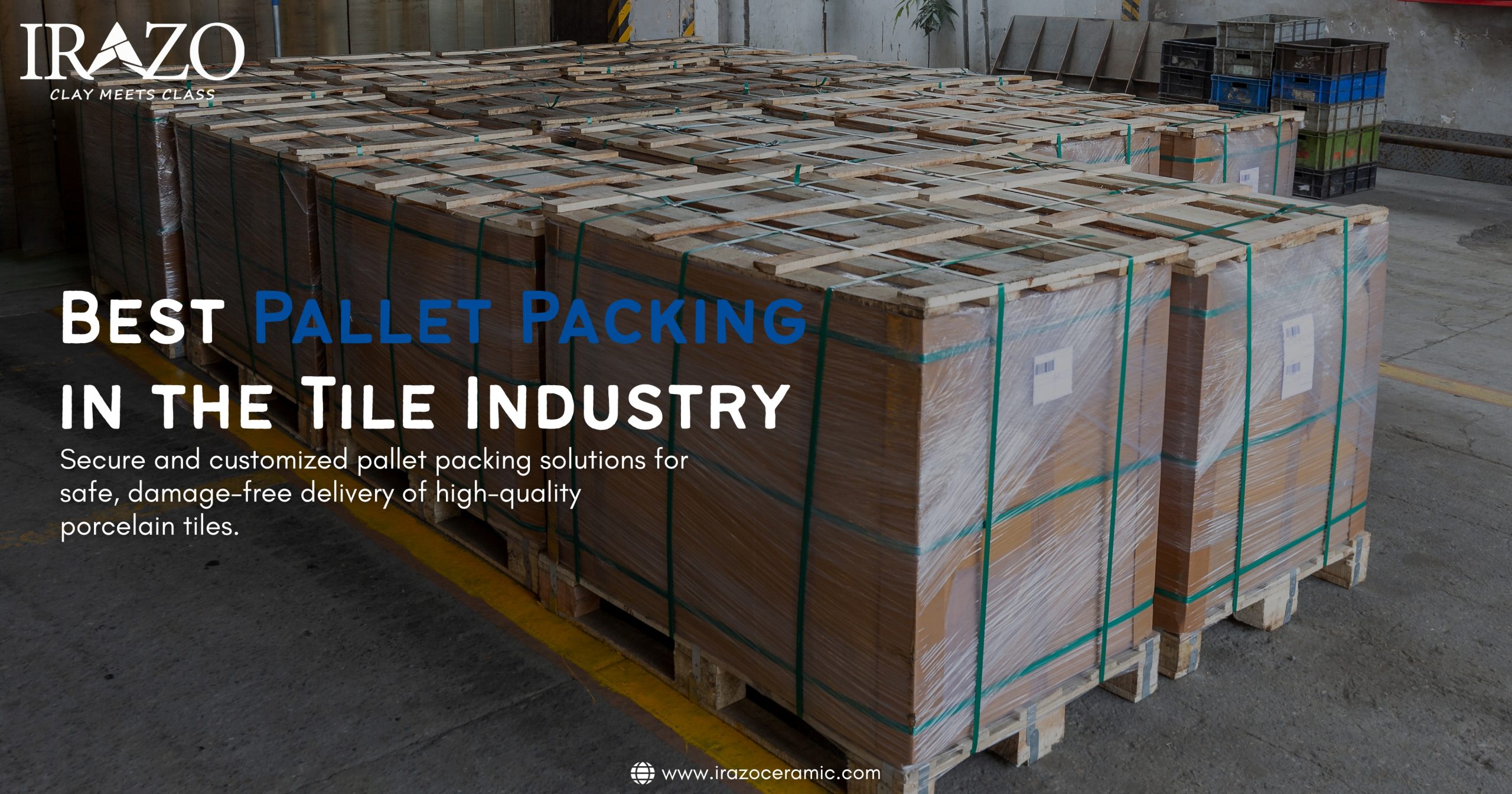When it comes to shipping, storing, or transporting goods safely, the choice of wood used in pallet packing plays a significant role. Pine wood pallets and Jungle Wood pallets are two of the most common types used in logistics. They are popular for both domestic and international shipping. Understanding the differences between these two materials can help businesses make more informed decisions regarding cost efficiency, product protection, and sustainability.
If you are looking for “wood pallets near me” or bulk pallet packaging for industrial use, this blog can help. It will explain the key differences between Jungle Wood and Pine Wood pallets. This way, you can choose what works best for your product and supply chain needs.
What is a Wood Pallet?
Before comparing Jungle Wood and Pine Wood, it’s essential to understand the basics of pallet packaging.
A wood pallet is a flat transport structure that stably supports goods while being lifted by forklifts, pallet jacks, or conveyors. It forms the foundation for pallet packing, providing a strong base for stacking, wrapping, and transporting goods. Wood remains the most popular material for pallets due to its strength, availability, and affordability.
These pallets are typically made from either softwood or hardwood, depending on the weight and nature of the goods being transported. Softwoods, like pine, are great for lightweight or one-time shipping. Hardwoods, such as Jungle Wood, are used for heavy-duty tasks. Their standardized shape and durability make them essential across supply chains—from warehouses to global shipping routes.
In many industries, looking for wood pallets nearby is common. Businesses want cost-effective, eco-friendly, and local options for better pallet packaging. Wood pallets are a trusted choice for both export and internal use. They are strong, reusable, and easy to handle.
Introduction to Pine Wood Pallets
Pine wood pallets are typically made from softwood species such as southern yellow pine or white pine. These pallets are popular for their lightweight nature and consistent quality. Pine is cultivated and harvested in many countries, making it a readily available and sustainable choice for manufacturing pallets.
Pine trees grow faster than hardwood trees. This helps create a more renewable supply chain, especially when they come from well-managed forests. This abundance supports large-scale production and helps keep costs low. This makes pine wood pallets a cost-effective choice for shipping, both at home and abroad.
Key Characteristics of Pine Wood Pallets:
- Lightweight: Easier to handle and reduces shipping weight.
- Uniform Grain: Offers consistent strength and fewer splinters.
- Cost-Effective: Readily available and typically cheaper than hardwood alternatives.
- Treated Wood: Often kiln-dried or heat-treated for international shipping.
Introduction to Jungle Wood Pallets
Jungle Wood refers to hardwood species sourced from dense forests. This includes a variety of tropical woods, such as sal, teak, neem, or acacia. Jungle Wood pallets are often chosen for tough jobs because they are hard and naturally resistant.
Jungle Wood pallets are often used in industries like construction, ceramics, steel, and making automotive parts. This is because they can hold heavy loads well. Their toughness enables them to handle large, bulky, and fragile items without warping or collapsing under weight.
In wet or rough conditions, Jungle Wood’s natural resistance to decay, pests, and damage is a big benefit. Jungle Wood is a popular choice for businesses.
It is great for making strong pallets. These pallets are good for many uses, long-term storage, and shipping over long distances. Although slightly more expensive than pine wood pallets, their extended lifespan and reliability often result in better value over time.
Key Characteristics of Jungle Wood Pallets:
- High Durability: Suitable for heavy loads and long-term storage. Their rugged build helps minimize pallet breakage, even under extreme industrial handling conditions.
- Dense Grain Structure: Makes it more resistant to damage, moisture, and decay. This compact grain helps keep the pallet’s shape and strength over time. It does this even when it faces moisture and temperature changes.
- Heavier Weight: Offers better stability but adds to transportation costs. This added weight contributes to better ground traction and stability during storage or movement.
- Long Lifespan: Excellent for reuse and long-term supply chain use. Their long lifespan is very useful in closed-loop logistics systems. In these systems, pallets are reused many times. This reuse provides cost savings and helps the environment.
Pine Wood Pallet vs. Jungle Wood: A Side-by-Side Comparison
Let’s break down the core differences between these two materials to understand how each performs in pallet packing operations.
| Feature | Pine Wood Pallet | Jungle Wood |
| Wood Type | Softwood | Hardwood |
| Weight | Lightweight | Heavy |
| Load Capacity | Moderate (light to medium loads) | High (ideal for heavy goods) |
| Durability | Less durable | Highly durable |
| Cost | More affordable | Relatively expensive |
| Availability | High (easily sourced) | Moderate to low (depends on region) |
| Ease of Customization | Easy to cut and shape | Requires heavy tools |
| Environmental Impact | Renewable (fast-growing) | Sustainable but slower to regrow |
| Usage | Domestic or light export goods | Industrial machinery, heavy tile loads |
Suitability Based on Application
Pine Wood Pallets in Use:
Pine pallets are most suitable for:
- Lightweight consumer goods
- Agricultural products
- Packaging where cost-efficiency is critical
- One-way shipments (non-returnable)
- Heat-treated exports (ISPM-15 compliance)
Many businesses looking for “wood pallets near me” choose pine wood pallets. They are cheaper and easy to find locally.
Jungle Wood Pallets in Use:
Jungle wood is ideal for:
- Heavy manufacturing goods
- Construction materials like tiles, cement, or bricks
- Reusable shipping in closed-loop systems
- Long-term warehouse storage
- High-impact or long-distance transport
In industries like ceramics or construction, materials can be heavy and fragile. Jungle Wood’s strength and density provide clear advantages for pallet packaging.
Pallet Packaging and Sustainability
Sustainability is an increasing concern in modern supply chains. Here’s how both wood types fare:
Pine Wood: Grows quickly, making it a highly renewable resource. These pallets are typically made from biodegradable and recyclable materials. Many manufacturers ensure responsible harvesting through certifications.
Jungle Wood: Though durable, hardwood trees take longer to grow. Over-harvesting can lead to deforestation if not sourced responsibly. However, the extended lifespan of Jungle Wood pallets reduces the need for frequent replacements, balancing its environmental footprint.
When sourcing from responsible vendors, both options can be eco-conscious, but pine has a slight edge in renewability.
Cost Considerations in Pallet Packing
Pine wood pallets are cheaper for businesses that need a lot, especially for one-time shipments. Their ease of handling and compatibility with international shipping regulations make them popular in global trade.
On the other hand, Jungle Wood pallets, while more expensive upfront, offer long-term savings through reusability. Their strength reduces the risk of product damage, especially in fragile industries such as ceramics, electronics, and machinery.
Businesses must weigh upfront investment against durability to decide which is the better fit.
Final Verdict: Which One Should You Choose?
Both Pine Wood and Jungle Wood have unique strengths in the world of pallet packaging. The right choice depends on your business needs. Consider factors like durability, cost, environmental impact, and the load type.
- Choose pine wood pallets for their affordability, lightweight nature, and export-friendly properties.
- Choose Jungle Wood for strength, durability, and long-term reuse — especially for fragile or heavy cargo.
In tile manufacturing and distribution, picking the right pallet is very important. This is because tiles are both fragile and heavy. Improper pallet packing can lead to breakage, customer dissatisfaction, and increased returns. That’s why top ceramic brands take great care in selecting the appropriate wood material for pallets.
About Irazo Ceramic – Trusted Tile Manufacturer and Exporter
When it comes to ceramic tiles, quality and durability go hand in hand. Irazo Ceramic is a renowned name in the industry, recognized for its premium porcelain tiles and innovative tile solutions.
As a top tiles company in India, Irazo Ceramic combines innovative design with world-class manufacturing standards. Irazo has tile collections that combine beauty and function. They are perfect for homes, businesses, or high-end projects.
They are committed to packaging safety, product quality, and global delivery. This ensures that every box of tiles arrives intact, whether it is packed on Pine Wood or Jungle Wood pallets.
Conclusion
The debate between pine wood pallets and Jungle Wood boils down to load type, budget, and usage frequency. Both materials have benefits for pallet packing. Choosing the right one can make your supply chain more efficient. It can also reduce damage and lower long-term costs.
In tile manufacturing, packaging precision is very important. Working with reliable suppliers is important. Irazo Ceramic is a leading tile company in India. They ensure product quality and safe delivery every time.
Read More: An Insightful Overview of India’s Ceramic Tiles Market
Reference:
Wood Pallet by Wikipedia[1].
Pine wood pallets are commonly used in industries that require lightweight, cost-effective shipping solutions. These include agriculture, food and beverage, retail, and export businesses. Pine pallets are great for one-time shipments and light to medium loads. They are also good for international shipping because they are easy to heat-treat.
The primary difference between pinewood and hardwood lies in their density, strength, and suitability for various applications. Pinewood is a softwood derived from fast-growing coniferous trees. It’s lightweight, easy to cut or shape, and typically more affordable. Hardwood, such as Jungle Wood, comes from slow-growing deciduous trees and is denser, heavier, and more durable.
The cost of a wooden pallet depends on the type of wood, treatment, size, and whether it’s new or recycled. Pine wood pallets usually cost between ₹500 and ₹900 each (about $6 to $12). This makes them a good choice for businesses.
Jungle Wood pallets, being heavier and more durable, may cost ₹1000 or more. Prices may also vary based on custom specifications and local availability when searching for “wood pallets near me.”
For international exports, pine wood pallets are often the preferred choice. They are light, cheap, and easy to heat-treat or fumigate. This meets ISPM-15 rules for shipping across borders. Their lower cost also makes them ideal for one-way shipments that do not return pallets.
Yes, many manufacturers design wood pallets, especially those made from Jungle Wood, for reuse in shipping and handling. Jungle Wood pallets are strong and hard. They are great for businesses that use closed-loop logistics or need long-lasting packing solutions.



